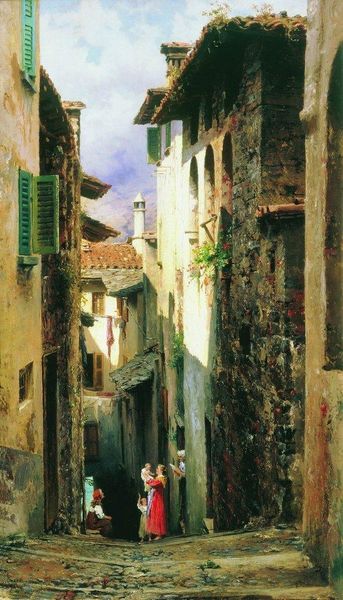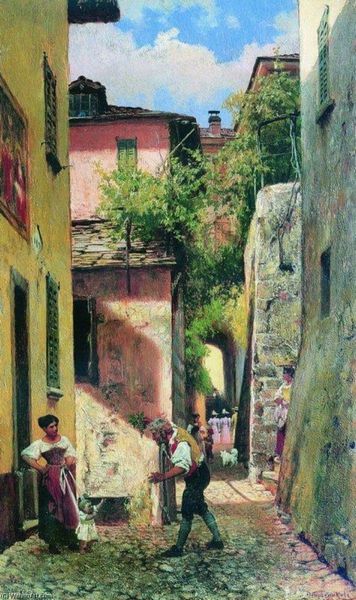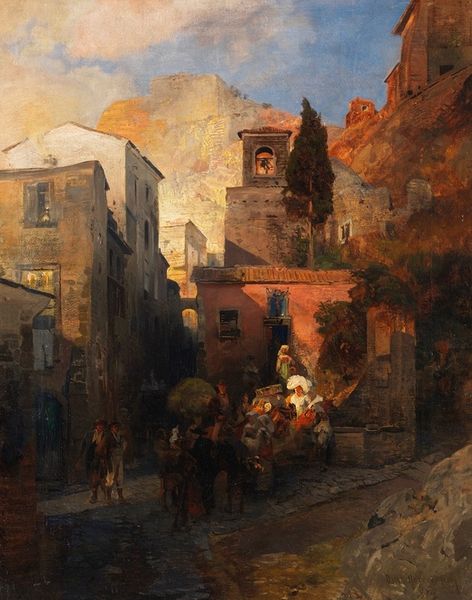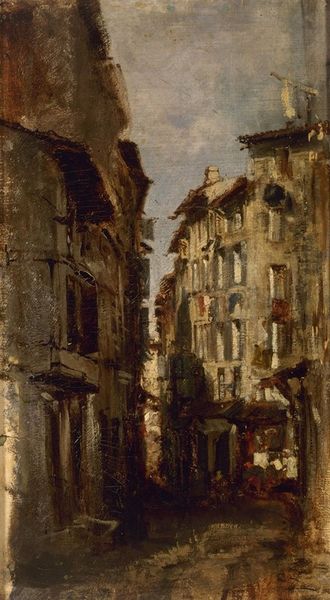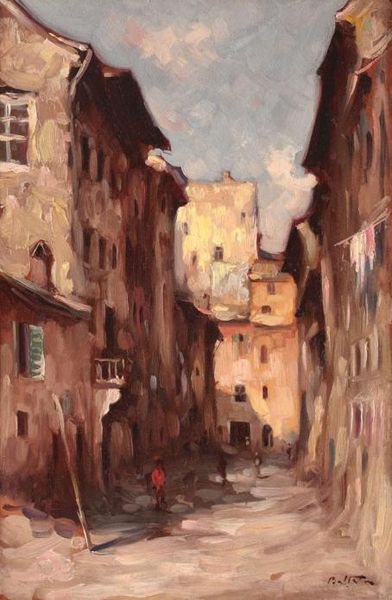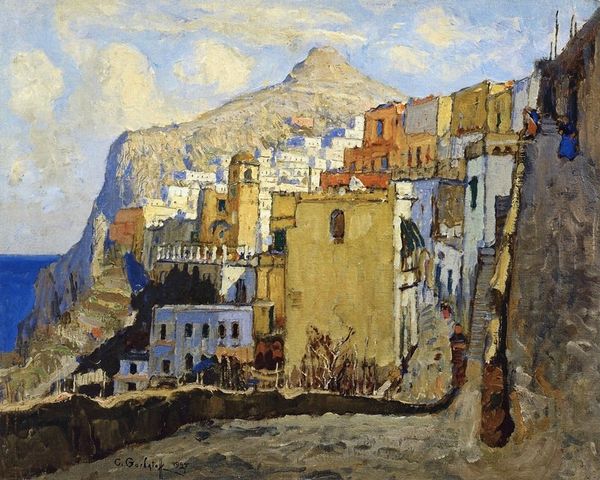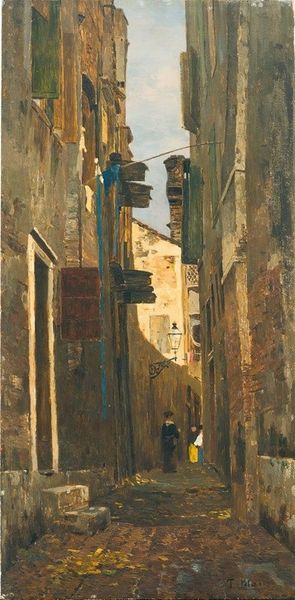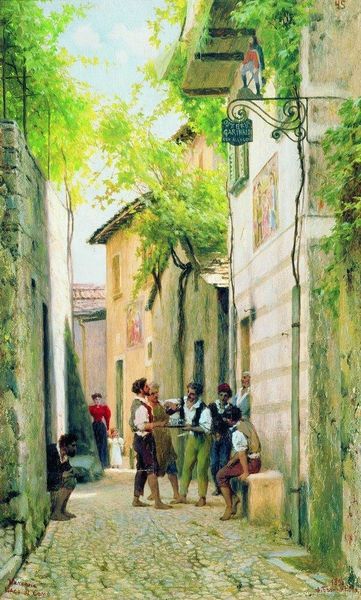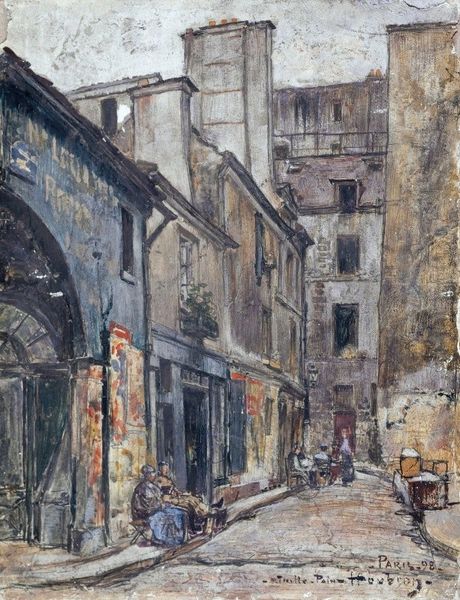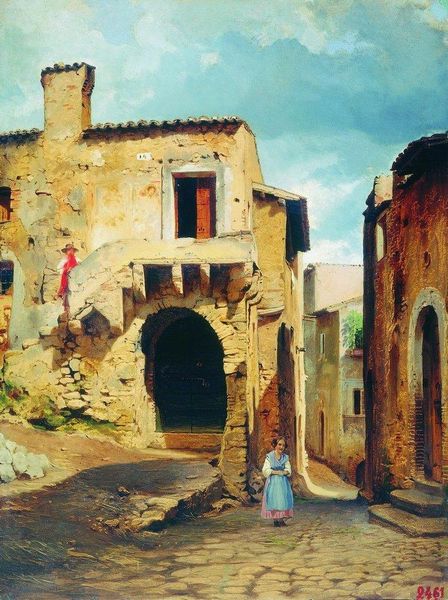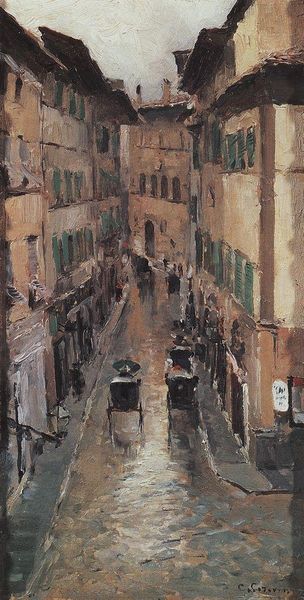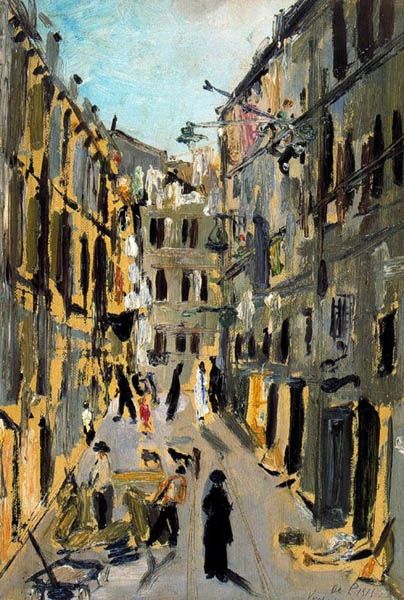
Copyright: Public Domain: Artvee
Curator: This is Carl Moll’s “A Street in Ragusa,” painted in 1887. Editor: It has a warm, inviting feel, almost like stepping back in time. The architecture, rendered in what looks like oil paint, is wonderfully tactile. Curator: Absolutely. Let’s delve into the materiality. Oil paint allows for such a rich impasto, capturing the texture of the stone and the light reflecting off its surface. The choice of materials grounds the artwork in a tangible reality, while the urban scenery depicted gives some indications on class distinctions as presented in Moll's vision of Ragusa society. Editor: The city itself seems to dominate the human presence here. Look at the people almost embedded within its streets—servants working, locals lingering on the stairwells… It makes you wonder about their access to social mobility during that time period. It prompts broader questions about power dynamics within the depicted urban social structure. Curator: Yes, the architecture isn’t simply a backdrop. The buildings, and their structure determine who belongs where, and also, perhaps, their gender. Editor: Interesting! The chickens and their movement freely contrasts sharply with the lives of the humans that appear to be determined or constrained. Curator: The artist definitely made a series of material choices to tell a broader story. He selected this specific view in order to produce this particular interpretation and engage with an existing debate, possibly influenced by other art trends of the period that engaged in similar tropes about Italy. Editor: Considering the era in which this oil painting was composed and the choice of colors for these individuals, how was Ragusa represented and romanticized to the people consuming this particular version? This makes me think how gender and economic class must also determine access and the quality of material availability in daily life in this town. Curator: Precisely. I think it’s key to approach art history through interdisciplinary methods, inviting conversations around materiality, class, and gender to extract meanings and connect these histories. Editor: Examining this piece closely certainly makes me question the relationship between the materials used, their portrayal of labor, and what this landscape meant to the humans that navigated it. I can see myself spending hours unraveling these aspects.
Comments
No comments
Be the first to comment and join the conversation on the ultimate creative platform.
